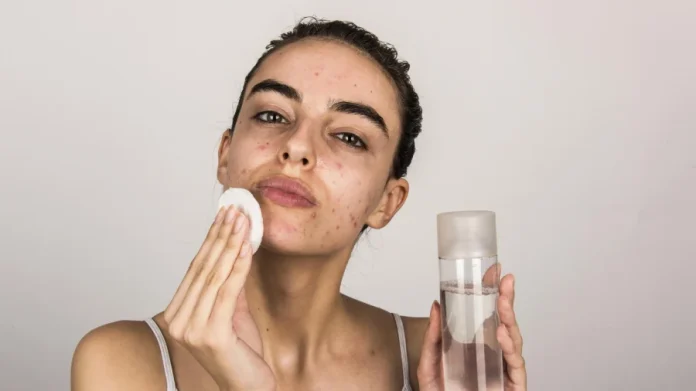Women’s bodies go through many phases every month. From ovulation to PMS and menstruating. These monthly cycles and fluctuating hormone levels have an effect on every part of their body – physically, mentally, emotionally, and their appearance.
Menstrual cycles have a major effect on their skin and may be to blame for many skincare challenges faced every month. This is because hormones play a major role in skin health, and when hormones fluctuate, it shows on your face.
While every woman’s cycle is unique, it’s worth examining a typical monthly cycle to understand how and why your skin might operate the way it does – and what you can do about it.

How hormones affect the skin
During a typical menstrual cycle, most women will experience either excessive dryness or oiliness, sometimes both. Typically, skin becomes most “problematic” just before, and during one’s period. During this time you may experience hormone-related breakouts.
Your cycle days 1 – 6
Due to low hormone production in the first few days of your cycle, your skin may feel dry or sensitive. This may make lines and wrinkles more noticeable. Apply plenty of hydrating products to counteract dryness, especially products containing hydrating hyaluronic acid.
Your cycle days 7 – 11 (follicular phase)
Oestrogen production increases and stimulates cell turnover. During this is the time during which their skin looks and feels its best. This may be a good time to gently exfoliate the skin to prevent clogged pores and to include a vitamin C product in your routine to increase radiance.
Your cycle days 12 – 16 (ovulation)
Oestrogen peaks during ovulation, which may result in glowing skin, but you may also notice that your skin becomes a little oilier during this time. If not managed, this may lead to the formation of breakouts. Now is a good time to opt for products with oil-free formulas.
Your cycle days 17 – 28 (luteal phase)
During the luteal phase, progesterone reaches its peak, resulting in your skin producing a lot more oil than usual. This is when hormonal breakouts occur. This is a good time to use detoxifying products that draw out impurities and products containing salicylic acid to decrease redness and help existing breakouts heal faster.
READ MORE: How To Treat Your *Dry, Flaky* Winter Skin
Understanding your cycle is essential, as it affords you the opportunity to better treat your skin at its various stages and address concerns with the right products and ingredients. Elle magazine recommends you spend time observing your skin and its patterns and adapt your skincare routine accordingly.




